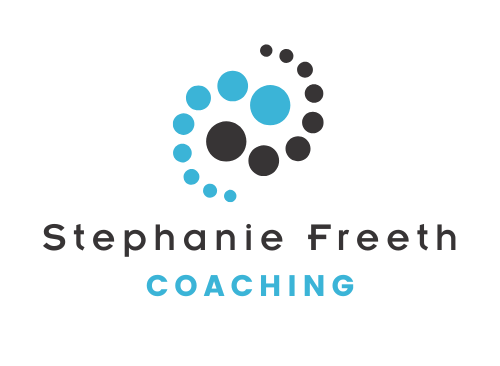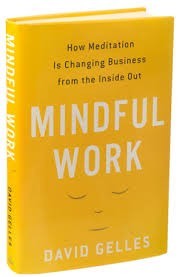I recently read Mindful Work: How Meditation is Changing Business from the Inside Out by business journalist and meditator David Gelles. Given my own personal journey to incorporate a meditation practice into daily life, I was interested in Gelles’ research and perspective on how meditation can impact individuals AND organizations. There seems to be a groundswell of interest in mindfulness in Western culture now more than ever. As mindfulness becomes more mainstream and as neuroscience catches up with understanding exactly how mindfulness changes the brain, it’s worth considering how these ancient techniques may or may not apply to modern organizational culture.
Last spring I became personally acquainted with meditation and mindfulness through an 8 week Mindfulness Based Stress Reduction (MBSR) class led by Paulette Grotrian at the Aprill Wellness Center in Ann Arbor, Michigan. This class came at an ideal time in my life when I was overcoming some health challenges that were exacerbated by stress– or at least my own perception of stress. The course gave me a whole new set of tools to handle stress and since then I have been eager to learn more about meditation and how more people can benefit from incorporating mindful practices into daily life.
The MBSR program is available nationwide. It was founded in 1979 by Dr. Jon Kabat-Zinn at the University of Massachusetts Medical Center to help patients dealing with chronic pain and disease. Kabat-Zinn is largely credited with bringing the tenets of meditation from a Buddhist tradition to a wider, non-secular audience in the United States. Jon Kabat-Zinn defines mindfulness as:
“paying attention in a particular way: on purpose, in the present moment, and nonjudgementally” (p. 23).
This definition may seem simple, but I have found that there are layers of meaning in each of these words.
By learning about mindfulness and meditation I was at first seeking a tool to combat stress. What I have found is that meditation defuses stress and so much more. Unfortunately, stress seems rampant in business culture and in life, and there are huge societal costs associated with stress. In Mindful Work Gelles points out, “Highly stressed people are at a greater risk for a panoply of illnesses, including heart disease, cancer, diabetes, depression and anxiety, fatigue and muscular pain . . . According to the World Health Organization, stress costs American businesses as much as $300 billion per year, much of that in the form of higher health care costs” (p. 84). These are staggering numbers with far-reaching consequences for sure.
But while stress may feel like something to run away from or just endure as a hazard of modern life, mindfulness allows us a different response. Gelles posits:
“Stress isn’t something imposed on us. It’s something we impose on ourselves. As a popular saying in mindfulness circles goes, ‘Stress isn’t what’s happening. It’s your reaction to it’. . . Mindfulness frees us from stress by giving us the mental flexibility to choose one experience over another, to direct our attention away from negative experiences and instead focus on neutral or positive ones”(p. 85).
What this means is that in the space between stimulus and response we can actually choose our reaction. All too often our reactions in challenging situations in personal and professional life are automatic, but they don’t have to be. Gelles points out, “With time, mindfulness reveals just how often our minds are rapidly assessing a situation, passing a judgment, and often causing us stress, making us unhappy. We realize that stress isn’t caused by what is happening; it is caused by how we respond to it, which determines our happiness in any given moment” (p. 25). To me, this is a revelation. Instead of being consumed by stress, I can stand back, watch it non-judgmentally and learn to let it go. While this realization can have a huge impact at a personal level, think of the kind of impact it could have on organizations, businesses and society if more individuals learn how to skillfully choose their response in any given moment rather than reacting automatically.
Much of the case for using mindfulness in the workplace is centered on recent neuroscience research that details how the brain is changed through meditation. While mindfulness has been practiced by some cultures for thousands of years, neuroscience is just catching up to measure (and for some to validate) the affects of meditation on the brain. There are a ton of different research studies that Gelles includes in Mindful Work:
“Indeed, mindfulness seems to change the brain in some specific ways. Broadly speaking, mindfulness increases activity in parts of the prefrontal cortex, an evolutionarily recent region of the brain that is important for many of the things that make us human. This region is the seat of much of our higher-order thinking–our judgment, decision making, planning, and discernment. The pre-frontal cortex is also an area that seems to be more active when we are engaged in pro-social behavior–things like compassion, empathy, and kindness” (p. 65).
While our initial assumption may be that mindfulness and business are two entirely different worlds, there are clearly benefits of mindfulness and meditation that have the power to transform how individuals and organizations function. In fact, the bulk of Mindful Work describes the various efforts that individuals in companies like General Mills, Ford, Google, Green Mountain Coffee, and Aetna have adopted in an effort to bring mindfulness into the workplace.
While Gelles discusses the advantages and potential backlash of using mindfulness in the workplace at length, he eventually brings the discourse full circle to point out that mindfulness still begins with each individual:
“Being mindful at work is not the responsibility of our employers. It is our responsibility. It is not a human resources function. It is an intimate personal journey. And it is not something that happens only at the office, from nine to five; it is a round-the-clock effort that demands the full attention of our hearts and minds” (p. 250).
To this end, I have found I am able to incorporate a formal meditation practice not through sheer will and determination to make it happen every day, but with assistance from, you guessed it, an app. The one I like is available as a subscription service called Headspace. This app goes through the fundamentals of meditation without the same time commitment to an 8 week MBSR course. (While I still think it’s helpful to have MBSR as an introduction to mindfulness and then to sustain the practice with an app like Headspace, this app can also serve as an entry point to meditation for those who can’t make an 8 week course work for them.)
It’s worth noting that Andy Puddicombe is the force behind Headspace. He is a British Tibetan Buddhist monk who has a delightful way of framing lessons and themes that are immeditely applicable beyond the meditation cushion. In fact with Headspace you can select themes around health and performance as a focus for daily practice in a series of 10-30 day modules. With MBSR as a base and Headspace as a tool for daily pratice, I have found myself becoming more in tune with my surroundings, less reactive, and better equipped to handle life’s stressors as they arise.
While mainstream interest in mindfulness in the modern workplace could be seen as denaturing an ancient, spiritual practice to the point of becoming “McMindfulness” as Gelles calls it, I would argue there is still much to be gained for individuals and organizations who are open to exploring for themselves (with the help of a great teacher or tool) just what kind of unexpected gifts meditation and mindfulness have to offer. In doing nothing but focusing on your breath, you may find peace, power, possibility and purpose–and more.

